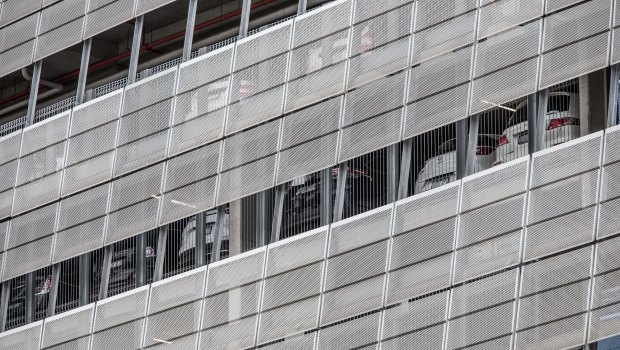By Clay Lucas
Underground car parking would be the only type allowed in most city apartment and office developments, under new rules being considered by Melbourne City Council.
And skyscrapers that cannot have underground parking because of soil conditions would instead have to ensure car spaces built on lower levels had high enough ceilings to later be converted into places for people to live.

Above-ground car parking is on the way out.Credit: Jason South
Planning Minister Richard Wynne will be asked to sign off on the proposed Central Melbourne Design Guide, released on Thursday by Melbourne City Council.
The rules aim “to improve the quality of urban design of private developments” across the city centre.
The strategy identifies many design problems at the ground level with new buildings in the city centre, and says more work must be done to force developers to create “inspiring" streets.
The Andrews government in 2016 adopted new laws for the towers that have proliferated around central Melbourne, as the city enjoys one of its biggest building booms.
Those new laws, introduced by Mr Wynne, required skyscrapers to be further set back from the street.
They also introduced density rules limiting height - meaning developers had to give back “community benefits” such as open space in return for being allowed to go higher.
But the Melbourne City Council report, to be voted on by councillors next week, says those reforms were not designed to consider how skyscrapers were built at the street level.
Nor did they consider “architectural quality”, the report said.
Under the council’s proposed changes for city buildings - the first such rewrite since 1999 - a new set of rules would dictate to developers several significant changes. These include that:
- Car parking in CBD buildings must be underground
- Southbank buildings with above-ground parking (because of soil conditions) must instead have car parking with flat floors and 3.5-metre-high ceilings so the spaces could be adapted in the future as apartments or offices
- Services such as air conditioning vents, electrical substations, fire control rooms, or rubbish areas must take up less than 40 per cent of a building’s ground floor, to reduce poor quality street facades
- Designs for new buildings must come with highly detailed drawings and illustrations showing precisely what a project will look like, rather than vague architectural plans
The council’s chair of planning, councillor Nick Reece, said the proposed rules would put “put the focus on what a building means to the people on the streets”.
And he said one key rule under the strategy was that new developments would need to better consider the overall street frontage of a building including weather protection for pedestrians.
“The first 20 metres rising up from the street is the most critical part of the building’s design. There’s no value in having a pedestrian-friendly city if you get soaked walking along the street every time it rains.”
The plan is likely to be approved by the city council next week, and will then be sent to Mr Wynne in March. He is likely to request an independent panel consider the proposals before deciding if the strategy can go ahead.
A spokesman for Mr Wynne said the minister would carefully consider the proposal.